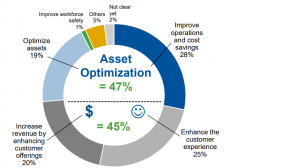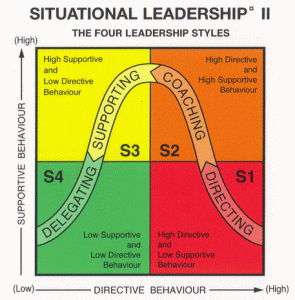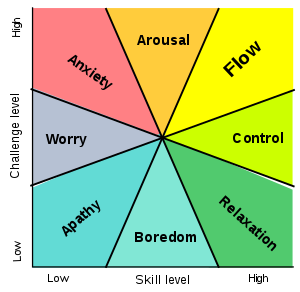As you are aware, one of the first steps in collecting data and interacting with “things” in the IoT era is to connect them to the internet. The business need could be addressed in different ways as there are a lot of solutions – communication protocols.
The choice of the optimal solution is dependent on the business and technical requirements.
So, the process of deciding on the best option for your solution is complex, and I would recommend having an experienced company take you through the decision process.
I also believe that having some knowledge will help you to ask the right questions and make better decisions.
Let me give you some facts about available wireless communication protocols.
WiFi
This is probably the first choice for office or building implementation. The apparent reason is the existing infrastructure. However, there are some challenges you have to be aware of:
1. IT (when you are working at or selling to a corporation), in most cases, will ask to have a separate dedicated network for the IoT sensors, and not to connect them to their corporate WiFi.
2. When the IT department is implementing any changes to the existing WiFi network, your sensors will get disconnected and will require re-provisioning.
3. WiFi connectivity is energy demanding so you will have to consider the implications of running battery-operated sensors
Please remember that the WiFi network you are using to connect your computer was designed to deliver a high data rate in an office environment. For a detailed description of the WiFi 802.11 IEEE standard, please go to www.ieee.org. However, I would recommend this only to technical individuals.
WiFi -ah (HaLow)
802.11ah is a standard designed for low data rate, long-range sensors with IoT in mind, and is more relevant than many other WiFi counterparts for building an IoT solution.
2G, 3G, 4G, and 5G
These are all mobile (cellular) network protocols.
2G is the oldest mobile network protocol. It has been phased out, or is in the process of being phased out, in most parts of the world. In some cases, it could be a good solution for your IoT sensors because of cost and power consumption advantages versus faster 3G and 4G alternatives. As with many implementations of IoT solutions, it has enough bandwidth.
In Europe, mobile network operators are working on an implementation of even more IoT focused communication protocol called Narrowband IoT or NB-IoT.
Some mobile network operators will keep 2G running until they are ready with the NB-IoT coverage.
For example, Erik Brenneis, CEO of Vodafone Global Enterprise, said their 2G network in Europe will live on until at least 2025.
3G, 4G and 5G
3G was the first high-speed mobile network. 4G is the following generation of mobile network standards, and most of us are using it today for mobile data. You can use 3G and 4G for your IoT devices, but the devices will consume more energy, and they will need a constant power source or regular recharging.
Though 5G (the next generation of mobile network protocol) will not be available for another few years, it will probably face similar issues as 3G and 4G in regards to IoT. The protocol is designed for high throughput. But we do not know what battery or energy harvesting technologies will be available, and what will be the IoT bandwidth needs at that time.
NB-IoT
NB-IoT (Narrowband IoT) is a protocol to address M2M for low power devices. Huawei, Ericsson, and Qualcomm are active proponents of this protocol, and are involved in putting it together. Some European mobile network operators are investing in NB-IoT. Vodafone and Deutsche Telekom are the first operators committed to NB-IoT coverage in Europe.
LTE
In the case of LTE, the lower the speed, the lower the power consumption. LTE Cat 0 and 1 are more suitable for IoT solutions. (More information is available in Radio-Electronics: www.radio-electronics.com/info/cellulartelecomms/lte-long-term-evolution/ue-category-categories-classes.php.)
LTE-M1
This is a wireless protocol built for IoT devices. LTE-M1 is not yet evaluable, as in the case of NB-IoT.
LTE allows software upgrades; the LTE base station hardware can stay unchanged. This is a significant cost-saving for mobile network operators. You only need the new end hardware.
European mobile network operators are investing in NB-IoT, so do not expect an implementation of LTE-M1 in Europe soon.
Bluetooth
Bluetooth is a short-range 2.4 GHz personal area network design often used for wireless speakers and headsets and device-to-device file transfers.
In the case of an IoT implementation, you will need an access point (a phone or dedicated gateway) due to its very short range. This protocol also requires key coordination at both endpoint and access point, so setup of your solution will be more difficult.
BLE
BLE is a Bluetooth designed for lower-power solutions that need less data. It remains in sleep mode except when a connection is initiated to reduce power consumption. This is a good option for fitness trackers and health monitors.
ZigBee
This is a 2.4 GHz mesh LAN (local area network) protocol designed for building automation and control solutions. It is a short range solution, but it gives you the benefits of a mesh protocol: resilient physical system architecture; and the ability to modify or expand your network without system disruption.
6LoWPAN
6LoWPAN uses lower data rate mesh networks. It is an open IoT network protocol like ZigBee, and it is primarily used for home and building automation.
In my opinion, it is one of the best options for IoT sensors in an office/building environment:
1. Low power consumption – sensors can run on battery power (The power consumption depends on the particular communication protocol implementation and the power consumption of physical sensors. For example, gas sensors demand more power to operate, and sometimes the need to be on for a long time in order to deliver an accurate reading.)
2. Easy to install – commissioning is similar to a mobile phone solution – just switch on the node. Sensors/actuators could be installed by a person without technical experience.
I like most an easy to implement and very reliable 6LoWPAN SmartMesh solution from Linear Technologies (www.linear.com/dust_networks)
Thread
Thread is an open standard, built on IPv6 and 6LoWPAN protocols. It has simple commissioning which is similar to 6LoWPAN; all IPv6 security options are available; and there is no single point of failure as if the Leader fails, another router or edge router will take its place. (More about Thread: www.threadgroup.org)
SigFox
SigFox is a French wireless network operator. SigFox and their partners set up a global LPWA (Low Power Wide Area) network to connect low-energy objects such as electricity meters and parking sensors, which need to be continuously on and emitting small amounts of data.
Significant of Western Europe is already covered. (More info about SigFox and its coverage: www.sigfox.com/en)
LoRaWAN
LoRaWAN is a media access control (MAC) protocol for wide area networks managing communication between gateways and end-node devices. It is designed to allow low-powered devices (sensors or actuators) to communicate with Internet-connected applications over long-range wireless connections. (More information: www.lora-alliance.org/technology)
NFC
Near Field Communication is a network protocol used for very close communication. It is currently used for contactless payments with a credit card or phone.
RFID
There are two types of RFID (radio-frequency identification): passive and active. This protocol was designed to enable devices without batteries to send a signal. In most implementations, a powered RFID reader creates an electromagnetic field, which induces an electric current in an RFID tag. The tag gets enough power to wirelessly send data back to the reader.
RFID solutions are most popular in retail (inventory management) and access control implementations.
My list does not cover all the possible options. I have focused on the most popular and, in my opinion, most relevant wireless protocols.
When designing your solution in addition to the cost of relevant components and cost of connectivity (in case of 2G or 3G), you will have to consider a certification costs. In some cases using a more expensive and certified module can give you a better option from a cost perspective.
As you can see, there is a lot of different ways to connect your IoT things, and in most of the cases, you will have more than one suitable option. In addition to purely technical and financial details of your implementation, please consider the level of experience you and your partner have with particular technology. It will limit your risk and reduce the time needed for project implementation.
I always recommend starting with Concept Design and Proof of Concept to test your assumptions.
You have a number of options to use and you will have to make a business decision.



